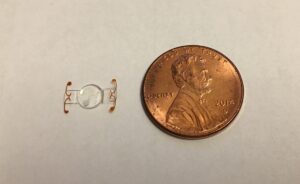Cataracts are an incredibly common condition where the lens inside the eye begins to become cloudy over time. This is the same lens that I’ll talk about in a later blog post about why patients eventually need reading glasses in their 40’s and older. The lens is a small disc that sits just behind the iris (the colored part of the eye) and is where the pupil leads to.
Light passes through the cornea, then the pupil, and then the lens to be focused on the back of the eye in order to allow our retina to see things clearly.
The lens is normally completely clear. Over a lifetime of exposure to UV rays from the sun, aging, and free radicals in our body, the lens will eventually start to become opaque, yellow, or hazy. This process is where the eye develops a cataract.
As the lens changes over time, it can begin to affect patient’s vision. It can lead to decreased vision, increased glare or light sensitivity issues, poor night vision, and many other difficulties that patients have to deal with.
This commonly begins to take place in the 60s and 70s, where most patients end up having their cataracts surgically removed and replaced with a new plastic lens. Cataract surgery is one of the most common procedures worldwide and thankfully has one of the highest safety profiles out there with generally low risk for side effects or complications.
While with any surgery, there are risks, cataract surgery is generally viewed as incredibly safe and effective!
There several different types of cataracts that patients can present with. There are some that are age related (the most common), but there are also types that patients can be born with, develop earlier in life, form due to long term steroid treatments, or from trauma. While those are a little less common, we do still see them somewhat frequently.
Cataract surgery might sound scary because it’s surgery on your eye, but thankfully the technology and techniques have improved drastically over time. It used to be you’d be in the hospital for a week with a patch over your eye and would have to wait 3 months in between surgeries for the second eye. Now?
In some cases, patients can have one eye done on a Tuesday, their second eye done on a Thursday, and then their post op is done the following week! The entire surgery takes about 10-15 minutes per eye and is generally only mildly uncomfortable. Patients often report a drastic improvement in their overall visual quality within a week of their surgery.
The lenses that are implanted in the eye are incredibly small and made of special types of plastic polymers. Most are made to correct for nearsightedness or farsightedness, but there are now lenses available to correct for astigmatism or in multifocal form to reduce someone’s need for reading glasses.
Check out the picture below to see a real implantable lens next to a penny for scale!

As lens technology continues to improve, it wouldn’t be crazy to say that we may someday have a lens that functions just as well as our natural crystalline lens before it becomes a cataract. For now we can only hope!
Thanks again for reading! I hope this helps you to gain just a little bit more knowledge about how complex the eye can really be!
